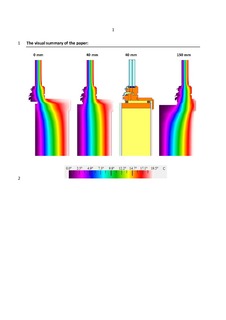| dc.contributor.author | Misiopecki, Cezary | |
| dc.contributor.author | Bouquin, Marine | |
| dc.contributor.author | Gustavsen, Arild | |
| dc.contributor.author | Jelle, Bjørn Petter | |
| dc.date.accessioned | 2017-11-13T08:41:49Z | |
| dc.date.available | 2017-11-13T08:41:49Z | |
| dc.date.created | 2017-10-05T22:42:55Z | |
| dc.date.issued | 2018 | |
| dc.identifier.citation | Energy and Buildings. 2018, 158 1079-1086. | nb_NO |
| dc.identifier.issn | 0378-7788 | |
| dc.identifier.uri | http://hdl.handle.net/11250/2465686 | |
| dc.description.abstract | The energy consumption in buildings contributes substantially to the worldwide energy use and greenhouse gas emissions. One of the crucial elements defining energy consumption is the building envelope, which in modern designs includes growing share of fenestration. Due to recent improvements of windows and walls, the thermal bridging effects occurring on their connections, become more significant. Window-to-wall connections appear to be especially important and can contribute up to 40% of the total heat loss caused by thermal bridges in building envelope. Thus, this study is investigating thermal properties of window-to-wall connections. The main scope of the work is to determine the most efficient window position in the window opening regarding minimizing thermal bridging effects. Five different wall constructions are investigated along with two windows with different U-values. The thermal simulation results show that the window position has a crucial impact on the amount of energy loss through the thermal bridges. For each wall type, the most energy-efficient position is found, resulting from detailed analysis of sill, head, and jambs construction details. For some cases placing the window in the most energy-efficient position reduces linear thermal transmittance (LTT) over 50%. Among considered positions, the temperatures on the internal surface of the assemblies are weakly influenced by the window position. Example calculations show that significant share of energy losses from the fenestration presence is caused by thermal bridge occurring on window-to-wall. | nb_NO |
| dc.language.iso | eng | nb_NO |
| dc.publisher | Elsevier | nb_NO |
| dc.rights | Attribution-NonCommercial-NoDerivatives 4.0 Internasjonal | * |
| dc.rights.uri | http://creativecommons.org/licenses/by-nc-nd/4.0/deed.no | * |
| dc.title | Thermal Modeling and Investigation of the Most Energy-Efficient Window Position | nb_NO |
| dc.type | Journal article | nb_NO |
| dc.type | Peer reviewed | nb_NO |
| dc.description.version | acceptedVersion | nb_NO |
| dc.source.pagenumber | 1079-1086 | nb_NO |
| dc.source.volume | 158 | nb_NO |
| dc.source.journal | Energy and Buildings | nb_NO |
| dc.identifier.doi | 10.1016/j.enbuild.2017.10.021 | |
| dc.identifier.cristin | 1502707 | |
| dc.relation.project | Norges forskningsråd: 207551 | nb_NO |
| dc.description.localcode | © 2017. This is the authors’ accepted and refereed manuscript to the article. LOCKED until 8.10.2019 due to copyright restrictions. This manuscript version is made available under the CC-BY-NC-ND 4.0 license http://creativecommons.org/licenses/by-nc-nd/4.0/ | nb_NO |
| cristin.unitcode | 194,61,55,0 | |
| cristin.unitcode | 194,64,91,0 | |
| cristin.unitname | Institutt for arkitektur og teknologi | |
| cristin.unitname | Institutt for bygg- og miljøteknikk | |
| cristin.ispublished | true | |
| cristin.fulltext | original | |
| cristin.fulltext | postprint | |
| cristin.qualitycode | 2 | |

